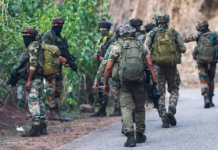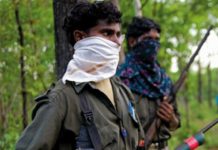 District Hospital in J&K’s Poonch district has received 13 ventilators to treat Covid-19 patients but none of the life saving machines is in use. Reason for this is shortage of specialist staff and the lack of continuous oxygen supply. Hospital has just two anaesthetists, one of them who is under transfer has been temporarily retained to deal with the coronavirus patients. There is also no technician to operate the high-end ventilators.
District Hospital in J&K’s Poonch district has received 13 ventilators to treat Covid-19 patients but none of the life saving machines is in use. Reason for this is shortage of specialist staff and the lack of continuous oxygen supply. Hospital has just two anaesthetists, one of them who is under transfer has been temporarily retained to deal with the coronavirus patients. There is also no technician to operate the high-end ventilators.
“We have no oxygen generation plant. We only have oxygen cylinders but to fill them we have to send these to Jammu. That is a journey of 7-8 hours,” said Dr Shameema Bhatti, superintendent of the hospital. “And we are in dire need of the oxygen for Covid-19 patients”.
The hospital, Dr Bhatti said, doesn’t have regulators for the Bulk Type Oxygen Cylinders required for the ventilators. “We have only received a few regulators, and our technician has been trying to fit them,” she said.
The situation is no different at Sub-District Hospital (SDH) at tehsil Mendhar in the same district that has recorded over 2,000 cases. The SDH has five ventilators which similarly are not in use. The hospital lacks both an oxygen plant and the anaesthetist.
According to a report carried by a local newspaper Daily Excelsior in September, the lack of a functioning ventilator at the hospital had led to death of a Covid-19 positive woman. “She was admitted at SDH Mendhar and later found COVID positive. She was shifted to Jammu, but due to non-availability of bed, the lady was again brought back and admitted in the isolation ward of SDH. The lady was kept on oxygen cylinder, but she breathed her last next morning (sic),”, the newspaper report read.
The state of affairs at the two hospitals is more or less reflective of the response to Covid-19 outbreak across the whole of Jammu division. This is already attracting some political attention with parties like National Conference criticizing the government for lack of adequate health facilities in the region to treat the rising number of Covid patients. Earlier in September, former J&K Chief Minister Dr Farooq Abdullah spoke to Union Health Minister Harsh Vardhan and raised the issue of “almost defunct” health service in Jammu region.
The political concern has also been triggered by the difficulty faced by the various Jammu hospitals including the Government Medical College (GMC) Jammu in coping with the increasing rush of Covid-19 patients. Reports in Jammu’s dailies have revealed the lack of viable oxygen supply in GMC, Jammu. The college has been criticized for its failure to upgrade “the medical oxygen plant and centralized oxygen supply in many wards”.
However, when contacted, the Principal GMC Jammu, Dr Naseeb Chand Digra said that the college had “plenty of oxygen supply”. The college, he added, was currently treating Covid-19 patients at GMC Jammu, Chest Diseases hospital and at Mother and Child Hospital.
Late surge
Unlike Kashmir Valley, Jammu division witnessed a late spike in the coronavirus cases — albeit Jammu reported its first positive case on March 7, two days before the Valley recorded its first. Most of this spike took place since September.
The first week of September was a turning point. Between September 1 to September 6 when J&K added 5859 positive cases, Jammu accounted for 3037 cases and Kashmir 2822 cases. On the contrary, up to August 31, out of the then total of 25580 cases, Jammu had just 8781 and Kashmir 16799.
Now following an incremental rise in the daily positive caseload ever since, Jammu threatens to catch up with the Valley in near future. This is apparent from the comparison of Covid-19 caseload in Srinagar and Jammu districts which is currently at 23751 and 21504 cases respectively.
What has changed in Jammu over the past month? “Nothing unique,” said Dr ADS Manhas, epidemiologist and state surveillance officer of infectious diseases in Jammu. According to him, the spike in positive cases in the province is the outcome of the rise in the number of daily tests. “We do daily around 10,000 to 12,000 tests now” said Manhas adding the number includes rapid antigen and RT-PCR tests. “Besides, tests are now done by private labs also”.
Caught off-guard
If the infrastructure at District Hospital Poonch and SDH Mendhar is anything to go by, Jammu much like Kashmir Valley is sorely unprepared as the pandemic threatens to overrun it. It didn’t make use of at least six months during which the region recorded far fewer cases than the Kashmir Valley.
Though since March, the union territory has significantly bolstered its healthcare infrastructure, it has fallen short of the soaring Covid-19 cases. Or like the hospitals in Poonch, the fresh equipment has remained unused for want of specialist personnel and the supporting infrastructure.
Before the onset of first lockdown on March 25, J&K had only 180 ventilators for 1.25 crore population. But now, according to a written reply to parliament by Union Minister of State for Health and Family Welfare Ashwini Kumar Choubey, J&K has been allocated 908 ventilators and provided 143 crore under Covid emergency package so far. In addition, J&K has also received 9.59 lakh N95 masks, 4.89 lakh PPE kits and 27.8 lakh HCQ tablets.
J&K Health Department figures, on the other hand, reveal that the UT has now 21664 isolation beds, 432 ICU beds and 5296 oxygen supported beds. But when rising Covid-19 cases outstripped medical facilities by July, the administration allowed home quarantine of asymptomatic Covid-19 cases.
Future uncertain
Going forward, the situation looks unlikely to change for the better. J&K now records an average of 500 cases a day — albeit it is half down from the peak in September. This is nevertheless taking its toll on the already overburdened medical infrastructure.
On a positive note, out of over 113568 positive cases, only 5055 are now actively positive, 106758 have recovered. Around 1755 have died; 625 in Jammu division and 1130 in Kashmir division.
The administration is in no position to re-impose lockdown. Two successive lockdowns in the union territory — first, a seven month siege enforced after the erasure of J&K autonomy in August last year and second, the Covid lockdown since March — have wrecked the economy leaving thousands unemployed.
“We are hoping that the cases don’t spike further,” said Dr Salim Khan, nodal officer for Covid-19 in Kashmir Valley and head of department of the Social and Preventive Medicine, Government Medical College, Srinagar. “As of now, the curve seems to have plateaued in the Valley, if not in Jammu where it has been rising for sometime now. So, it is time for Jammu needs to get its
act right”.
letters@tehelka.com













